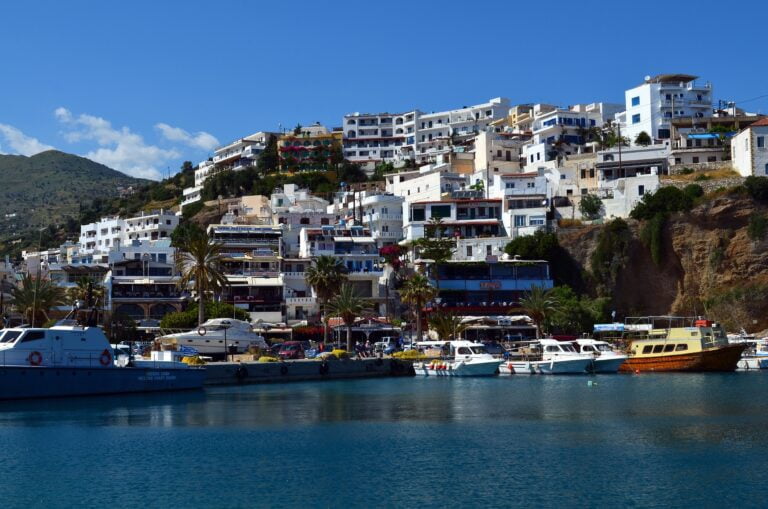Crete and the Meltdown Dark Ages: From Desolation to Resilience (c. 1100-800 BCE)
The annals of history are punctuated by periods of great flourishing and inevitable decline. One such period, often shrouded in mystery and intrigue, is the Dark Ages. This era, which saw the downfall of many ancient civilisations, profoundly impacted Crete, home to the illustrious Minoans and Mycenaeans. This article delves into the myriad factors that contributed to this decline, from the enigmatic Sea Peoples to natural calamities, and how Crete emerged from this darkness, embodying resilience and hope.
The Glory Days: Minoans, Mycenaeans, and Majestic Palaces
Before delving into the Dark Ages, it’s essential to understand the grandeur that preceded it. Crete was the epicentre of two magnificent civilisations:
- The Minoans: Renowned for their palatial architecture, maritime prowess, and the legendary labyrinth of the Minotaur.
- The Mycenaeans: Mainland Greeks who, inspired by Minoan achievements, established their dominance in Crete, leading to a harmonious blend of cultures.
These civilisations constructed grand palaces, like Knossos and Phaistos, which stood as testaments to their architectural genius and administrative acumen.

The Onset of the Dark Ages: A Confluence of Catastrophes
The decline of Crete’s grandeur was not an overnight event but a result of a series of unfortunate incidents:
- The Sea Peoples: Raiders from the Deep
The Sea Peoples, a confederation of maritime raiders, are often cited as one of the primary catalysts for the Dark Ages. Their origins remain debatable, but their impact on the Mediterranean civilisations is undeniable.
- Attacks on Crete: The Sea Peoples launched relentless raids on Crete, targeting its coastal settlements and trade routes. These attacks weakened the island’s economic backbone and disrupted its trade networks.
2. Natural Disasters: Earth’s Fury Unleashed

While human factors played a role, nature, too, had a hand in Crete’s decline:
The Harka Eruption: A Catastrophe Unleashed
Mount Etna, one of the most active volcanoes in the world, erupted with unparalleled fury during the Harka event. The eruption spewed vast amounts of ash, sulfur, and volcanic debris into the atmosphere, leading to several immediate and long-term consequences:
- Climatic Changes:
The enormous volume of volcanic ash and gases released into the atmosphere significantly cooled the region’s climate. This phenomenon, known as a “volcanic winter,” led to:
- Shorter Growing Seasons: The temperature drop meant the growing seasons were curtailed, affecting agriculture. This was a significant blow for Crete, an island heavily reliant on its agricultural produce.
- Unpredictable Weather Patterns: The years following the eruption saw erratic rainfall, with periods of drought followed by intense rainfall, leading to crop failures.
2. Maritime Disruption:
The volcanic ash and pumice released during the eruption floated on the sea’s surface, disrupting maritime activities. For Crete, this meant:
- Impacted Trade Routes: The floating volcanic debris made navigation treacherous. Given Crete’s dependence on maritime trade, this severely impacted its economy.
- Loss of Maritime Dominance: The disruption in sea routes and the dangers of navigating through volcanic debris-laden waters meant that Crete’s dominance as a maritime power was challenged.
3. Socio-Economic Consequences:
The combined effects of climatic changes and maritime disruption had profound socio-economic implications for Crete:
- Economic Downturn: With trade routes impacted and agriculture suffering due to climatic changes, Crete faced a financial crisis. The once-prosperous island grappled with food shortages and economic stagnation.
- Migration and Population Movement: Faced with challenging living conditions, many Cretans might have migrated to other regions for better opportunities, leading to shifts in population dynamics.
Internal Strife and Economic Decline
With external pressures mounting, internal strife became inevitable:
- Destruction of Palaces: Once symbols of power and prosperity, the magnificent palaces were destroyed. While some attribute this to external invasions, others believe internal rebellions and socio-economic disparities played a role.
- Economic Downturn: The combined effects of raids, natural disasters, and internal conflicts led to a severe economic downturn. Trade routes collapsed, and Crete’s once-thriving economy went into a tailspin.

Emerging from the Shadows: Crete’s Resilience
While the Dark Ages were undoubtedly challenging, they were not the end for Crete. The island showcased remarkable resilience:
- Adaptation to New Realities: With palatial economies collapsed, Cretans shifted to smaller, self-sufficient communities. They adapted to the changed landscape, focusing on local trade and agriculture.
- Cultural Preservation: Despite the challenges, Cretans held onto their cultural identity. Art and craftsmanship, though different from the palatial era, continued to flourish, showcasing their indomitable spirit.
- Re-establishing Trade: Slowly but surely, Crete began to re-establish its trade networks, leveraging its maritime heritage. New settlements emerged, and the island once again became a vital player in the Mediterranean trade.
- The Iron Age: this was the dawn of a new age, The Archaic Period. The birth of the great Iron Age.
Conclusion: From Desolation to Hope
The Dark Ages, while a period of decline, were not devoid of hope. Crete’s journey through this era is a testament to the human spirit’s ability to adapt, persevere, and rebuild. The island, battered by external invasions, natural calamities, and internal strife, emerged stronger, laying the foundation for future generations. It’s a story that reminds us that even in the darkest times, the ember of hope continues to glow, guiding us towards a brighter future.
Table of Contents
Visits: 7







